Abstract
To identify risk factors predicting the involvement of boat operators in incidents resulting in at least one fatality, the authors obtained data from a mail survey of registered boat owners in the State of Ohio and from the Boating Accident Report (BAR) files for 1983-86 compiled by the Ohio Department of Natural Resources. Additionally, they reviewed Ohio death certificates for those years to identify cases missed by the BAR system. Forty percent of the fatal incidents would have been missed by a search of death certificates alone. During the period studied, 107 boating incidents resulted in 124 deaths. There were 0.9 fatal incidents per million boat-operator hours. Factors found to be associated with an increased risk of a fatal boating incident were the operator being younger than 30 years, having fewer than 20 hours of boat operating experience, and lacking formal boat safety training. Canoes, kayaks, rowboats, and inflatables were associated with a higher rate of fatal incidents per million hours of use than were motorboats. Young age and lack of experience were associated independently with increased risk, explaining some of the effects associated with types of boats and with lack of training. The findings suggest that supervised experience, safety training programs aimed at young operators, and interventions specific to certain types of boats are likely to reduce boating fatalities.
Full text
PDF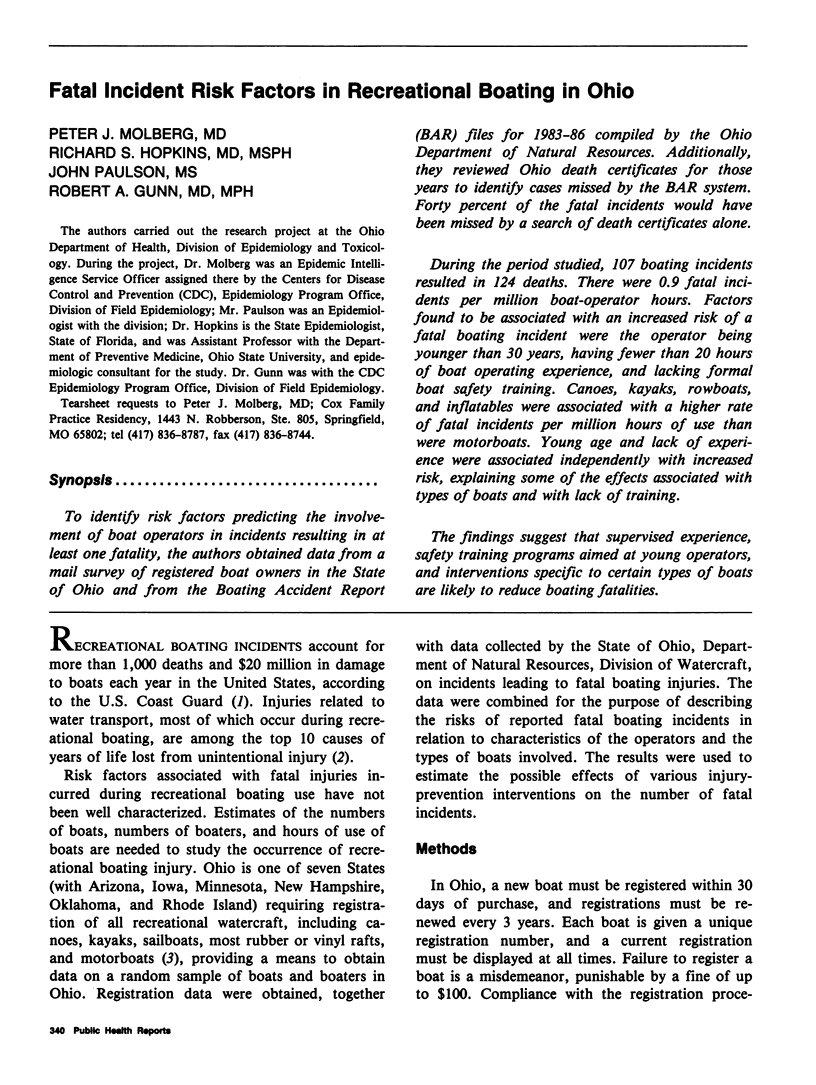
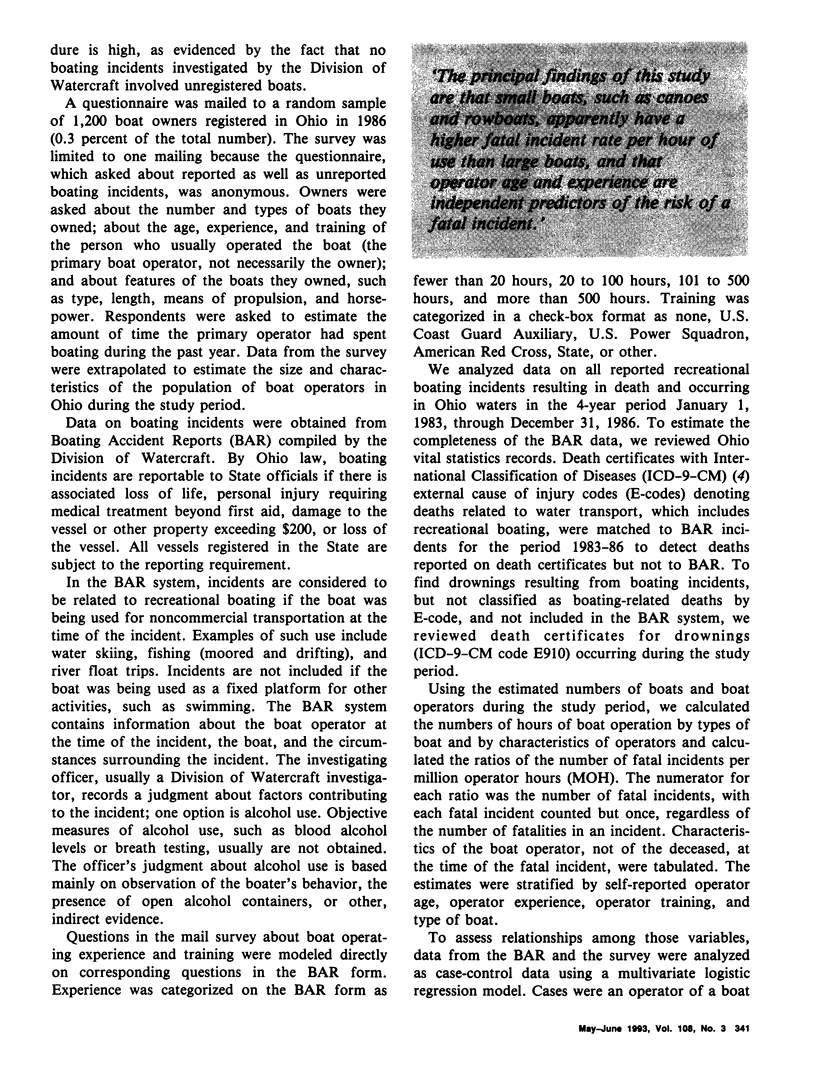
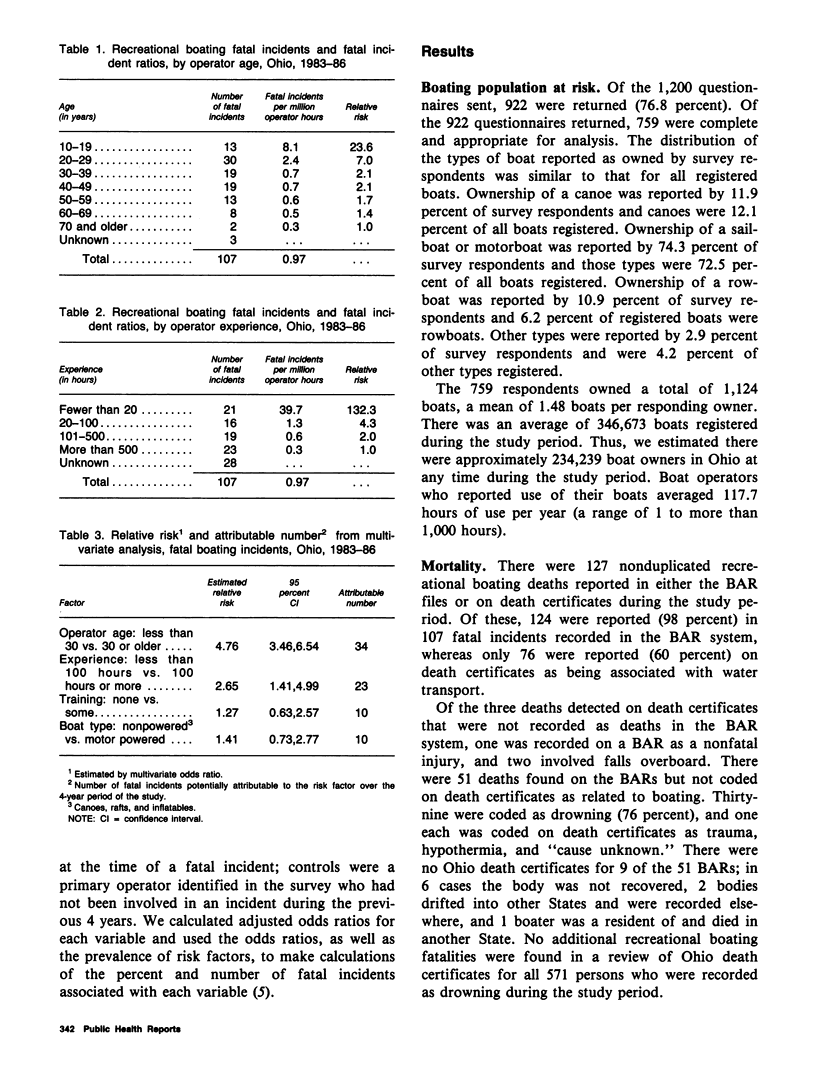
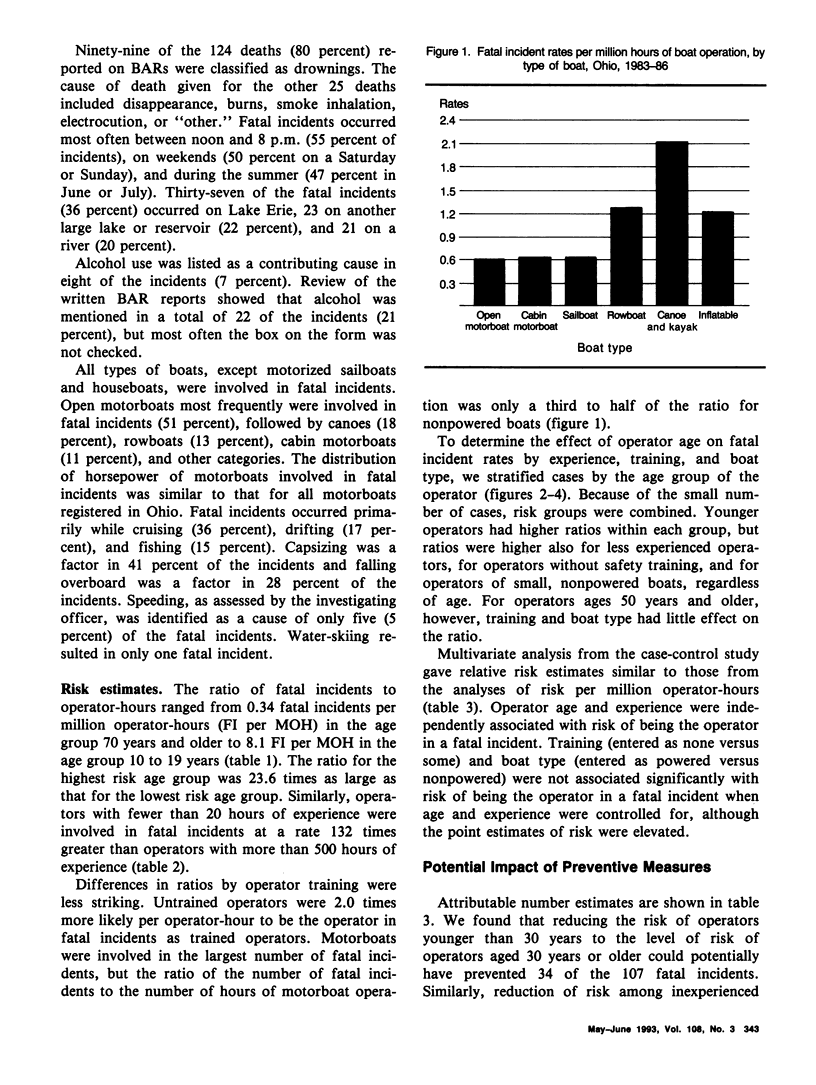

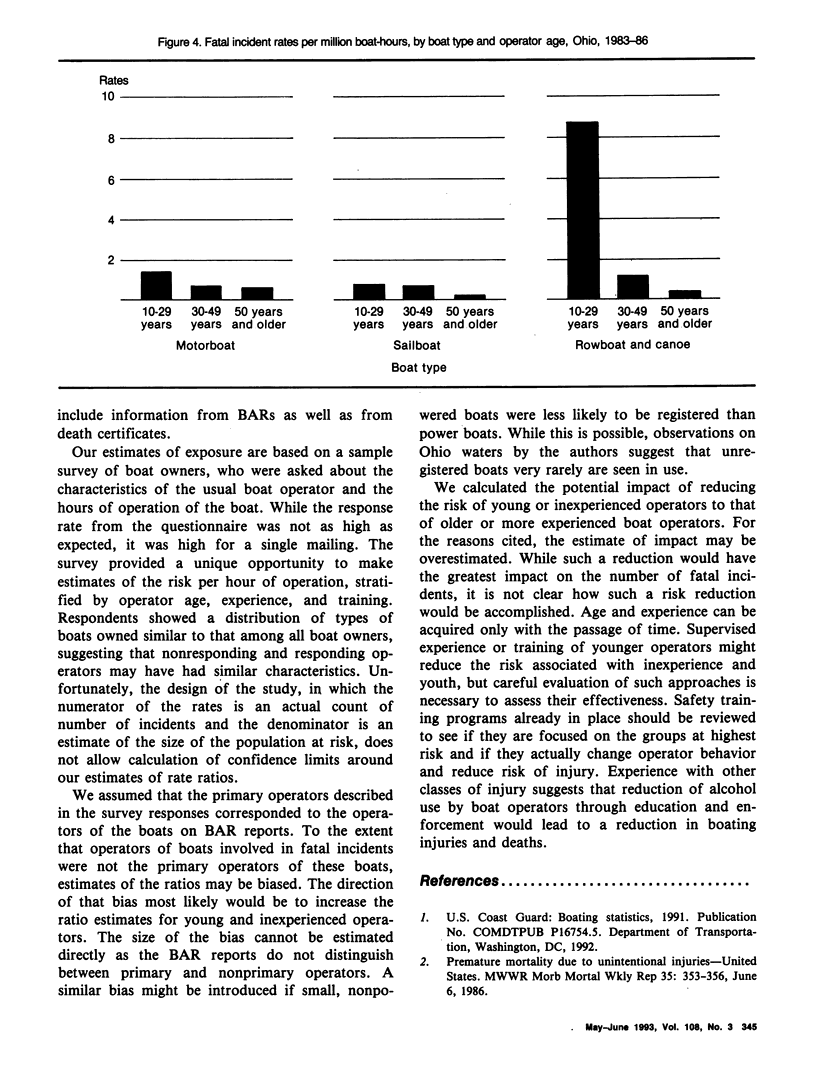
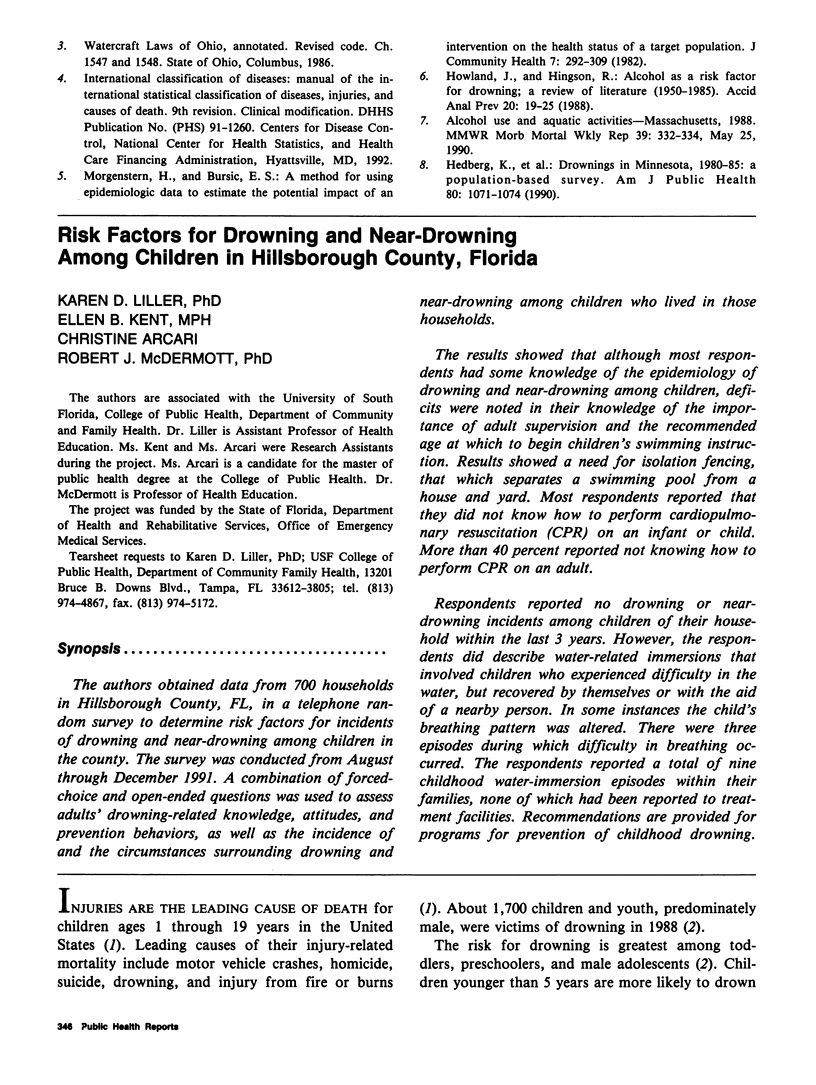
Selected References
These references are in PubMed. This may not be the complete list of references from this article.
- Hedberg K., Gunderson P. D., Vargas C., Osterholm M. T., MacDonald K. L. Drownings in Minnesota, 1980-85: a population-based study. Am J Public Health. 1990 Sep;80(9):1071–1074. doi: 10.2105/ajph.80.9.1071. [DOI] [PMC free article] [PubMed] [Google Scholar]
- Howland J., Hingson R. Alcohol as a risk factor for drownings: a review of the literature (1950-1985). Accid Anal Prev. 1988 Feb;20(1):19–25. doi: 10.1016/0001-4575(88)90011-5. [DOI] [PubMed] [Google Scholar]
- Morgenstern H., Bursic E. S. A method for using epidemiologic data to estimate the potential impact of an intervention on the health status of a target population. J Community Health. 1982 Summer;7(4):292–309. doi: 10.1007/BF01318961. [DOI] [PubMed] [Google Scholar]


